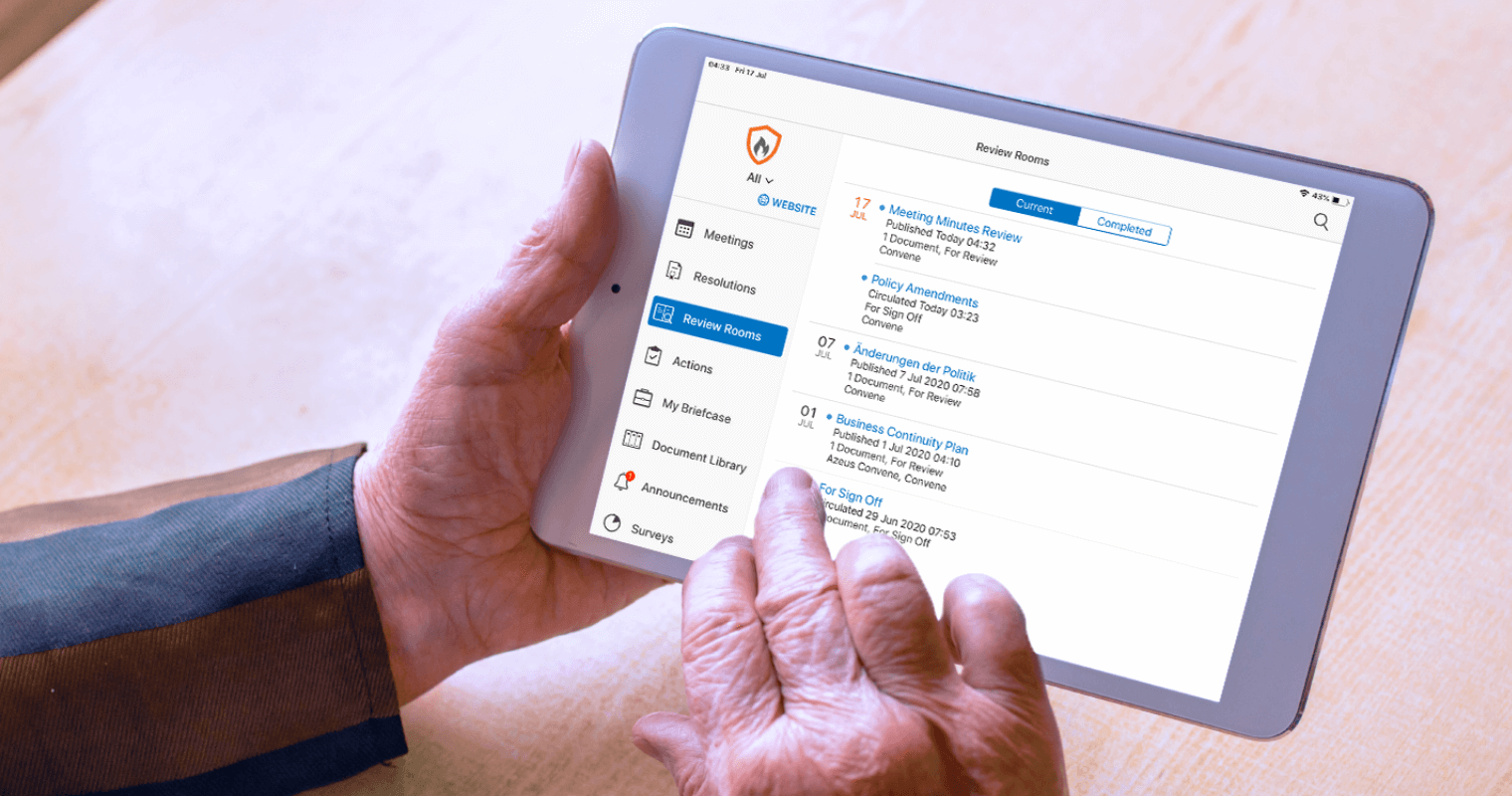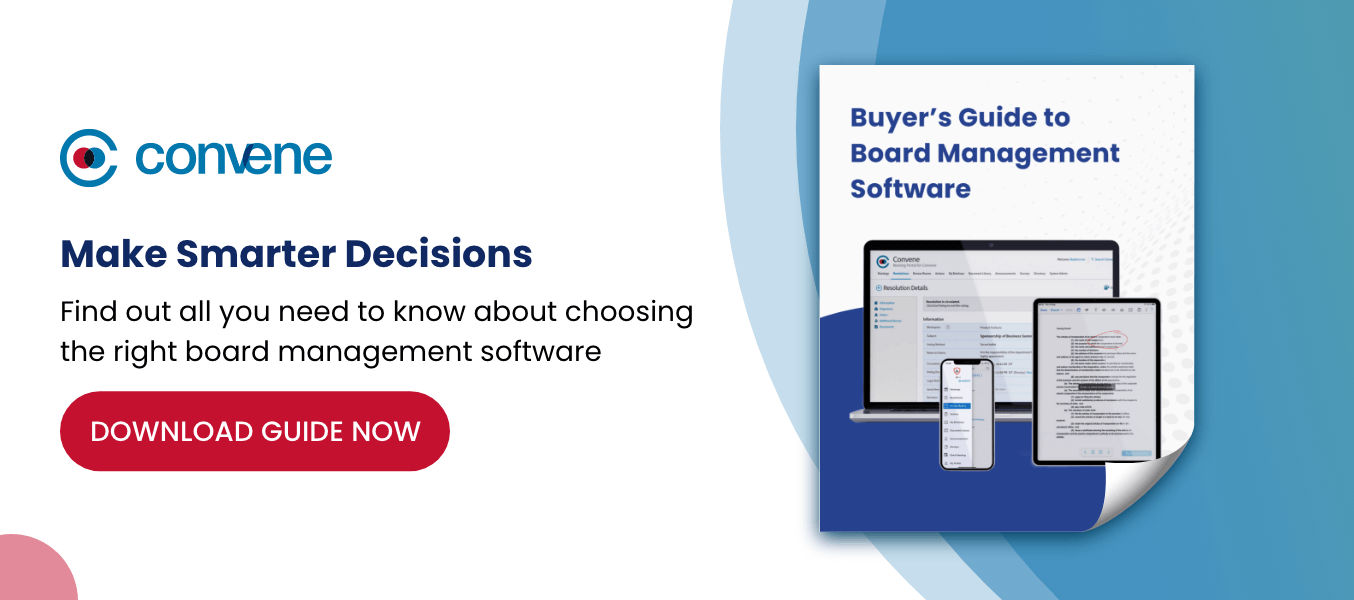A successful board meeting hinges on the ability to make timely and well-considered decisions. In some cases, the board of directors cannot convene in person or virtually — causing delays during urgent matters. However, not every decision can wait for the next scheduled meeting. This is where a unanimous consent board solution becomes an imperative tool.
In this guide, we will explore what is a unanimous vote, how to write it, and some unanimous consent examples that you can use.
What is the definition of a unanimous consent resolution?
A unanimous consent board resolution is a voting method utilized to expedite the process of coming to a unanimous decision. But what is a unanimous decision? It refers to a scenario where all board members provide their consent in writing or electronically, affirming their approval of the resolution. The written or electronic consent can be done through signed documents, emails, or other approved electronic means — depending on the bylaws of the organization.
In other words, it’s an alternative approach where all members agree to a specific resolution without holding a formal meeting. Such a method is ideal when quick decisions are required, or when it is difficult for the board to coordinate a meeting.
A unanimous consent resolution can be applied to a range of actions, including approving minutes, adopting reports, or handling non-contentious minutes. However, it cannot be utilized for more complex or controversial decisions where a full debate is necessary, including:
- Deciding on the appointment or dismissal of the CEO
- During mergers and acquisitions
- Making major financial decisions such as approval of large investments or budget cuts
- Deciding on major policy changes like altering the company’s mission or goals
- Addressing allegations of misconduct or legal violations, which often requires intense deliberation
Written Consents vs. Meetings: A Comparison
Written consents are an effective method for boards or companies looking to take quick action on an urgent matter, without the need for lengthy scheduling discussions. Since written consents require unanimous approval, they can serve as strong evidence to third parties like investors or regulators. Furthermore, unanimity can strengthen the legitimacy of decisions during due diligence processes.
However, in situations where there is controversy or potential for disagreement, a formal meeting is the best practice. Meetings allow for more in-depth discussions about the issues, hence, providing a platform for differing opinions to be voiced. It is ideal for engaging in real-time dialogue, or when consensus is not easily achievable.
When is a unanimous written consent considered valid?
For a unanimous consent resolution to be valid, all directors must agree without any dissent. If even one director objects or abstains, a formal meeting would typically be required to discuss and vote on the matter.
The resolution being approved must be clearly outlined and documented in the written or electronic consent. Any ambiguity could invalidate the resolution or lead to misunderstandings. Moreover, the unanimous consent must be documented in the board’s official records — providing a legal record of the decision.
When such conditions are met, the unanimous consent resolution holds the same legal weight as a decision made during a formal board meeting.
The Process of Facilitating a Unanimous Written Consent Vote
Conducting a unanimous consent vote should involve a straightforward process that allows the board of directors to make decisions efficiently. The basic steps are:

- Identify the proposal — Before initiating the unanimous consent process, the presiding officer or chairperson must clearly articulate the proposed resolution. For transparency, it’s crucial to provide a comprehensive background to give the proposal a context, highlighting any associated risks so all members can grasp the importance of the decision. The proposal must be straightforward, unambiguous, and likely to garner full agreement from all members.
- Announce the proposal — The chairperson shall formally present the proposal to the board. Therefore, ensuring all members are fully aware and informed of the matter at hand. In announcing the proposal, a recommended timeline would be:
- One week before the meeting, the chair should send out a preliminary notice to the board that a proposal will be presented, including a brief overview.
- Three days before the meeting, the formal proposal announcement must be included in the agenda and supporting materials should be distributed.
- During the meeting, address any concerns regarding the proposal prior to the vote. Discuss the voting timeline to prepare members for the upcoming vote.
- Invite objections — After the presentation, the chair shall explicitly invite any objections from board members. This invitation allows directors to express dissent or raise concerns regarding the proposed action.
- Confirm approval — If no objections are raised within the allotted time frame, the chair shall formally confirm the adoption of the proposal. Such affirmation signifies that the proposal has been approved by unanimous consent.
- Document the decision — The next step is to document the outcome of the unanimous consent vote in the official meeting minutes. The minutes must reflect the proposal’s specifics, the fact it was adopted without objection, and the date of the approval. Such documentation serves as a formal record of the board’s actions. Utilizing tools like board portals can significantly streamline this process by offering a centralized platform to simplify the creation and distribution of meeting minutes.
Upon concluding the unanimous consent process, the chairperson shall proceed to the next item on the agenda.
How to Write a Unanimous Consent Board Meeting Resolution with Examples

Below is a step-by-step guide on how to write the resolution and some unanimous written consent examples.
1. Create a clear and concise title for the resolution. It should reflect the resolution’s purpose or subject in the board records.
Example: Unanimous Written Consent of the Board of Directors of [Company Name] Approving [Action, e.g., Acquisition of XYZ Corp].
2. Specify the date the resolution is being proposed, and the introduction stating that it is being made under unanimous consent.
Example: This Unanimous Written Consent of the Board of Directors of [Company Name], effective as of [Date], is executed in accordance with the company’s bylaws and applicable state law.
3. State the authority by citing the legal basis for acting without a formal meeting, such as the relevant section in the company’s bylaws or state law.
Example: Pursuant to [Bylaws Section X] and [State Statute], the board is authorized to take action via unanimous written consent.
4. Define the action being approved in specific detail. Include relevant terms, amounts, agreements, or any key facts necessary to understand the decision.
Example: RESOLVED, that the Board of Directors hereby approves the acquisition of [Target Company Name] for a purchase price of $[amount], under the terms and conditions set forth in the Agreement dated [Date].
5. Detail any conditions that must be met or the next steps to be taken, such as authorizing members to act or setting deadlines.
Example: RESOLVED FURTHER, that [CEO/Officer Name] is authorized to sign all necessary documents and to take all further actions to finalize the acquisition.
6. Acknowledge the unanimous consent, stating that all members must agree for the resolution to be valid.
Example: This resolution is adopted by unanimous written consent and shall be effective only upon the signature of all directors. If any director fails to sign, the resolution will not take effect.
7. Provide a space for each director to sign — with their name, signature, and date clearly listed.
Example: Director Name | Signature | Date
8. Mention that the resolution is filed with the corporate records or meeting minutes for proper documentation.
Example: This unanimous consent resolution will be recorded in the official minutes of [Company Name]
Advantages and Disadvantages of a Unanimous Consent Resolution

To determine when is unanimous consent the most appropriate tool for decision-making, it’s best to first understand its advantages and disadvantages.
Advantages of Unanimous Consent Resolution
- Enhances decision-making efficiency — A unanimous consent can streamline decision-making by allowing legislative bodies or boards to bypass lengthy debates and procedural steps where there’s a clear agreement. This can be particularly useful for passing routine matters, non-controversial legislation, or emergency measures.
- Prevents legislative gridlock — Securing unanimous agreement can prevent the stagnation often caused by prolonged debate or political deadlock. This may be imperative when legislative bodies are divided or when contentious issues risk halting progress on critical decisions.
- Fosters bipartisanship — In situations where political or ideological divides thrive, unanimous consent can foster cooperation across party lines. It helps facilitate agreement on shared goals or non-partisan issues, with an end goal to encourage legislators to find common ground.
- Cost savings for non-profits and small businesses — By reducing the need for formal meetings, travel, and meeting logistics, unanimous consent helps cut administrative expenses. This is especially ideal in sectors where budgets are tight. For instance, a non-profit board can approve grant applications without incurring extra costs for in-person meetings.
Disadvantages of Unanimous Consent Resolution
- Stifles dissenting voices — Requirements for unanimous consent may pressure members to suppress their dissenting views to avoid being seen as obstructive. Hence, hinders important debates on contentious issues and leads to decisions that don’t fully consider minority views.
- Allows dominance of powerful interests — In some instances, the unanimous consent process can be exploited by small factions (or individuals) to assert control. If a powerful member strongly advocates for a particular decision, others may feel obligated to consent, even if it goes against the larger group’s best interests. This can be problematic in boards or legislatures where power imbalances exist.
- Creates risk of conflicts of interest — In large or diverse groups, achieving unanimous consent can be procedurally challenging. Seeking agreement from every single member may create delays, especially for multinational boards with different legal requirements for obtaining consent.
Frequently Asked Questions About Unanimous Consent Resolution

Can unanimous consent be revoked?
Yes, unanimous can be revoked. However, it depends on the time and governing rules of the organization. If a director changes their mind after initially providing consent, they can typically revoke it before the resolution becomes official. But once the resolution is formalized and implemented, revoking consent may not be possible unless allowed by the bylaws of the organization.
What are Robert’s Rules Of Order regarding unanimous consent?
Under the Robert’s Rules of Order, the same conditions apply. A request for unanimous consent may be proposed if a matter is relatively minor or opposition is not expected. When someone else makes the request, the board president will restate it and pause for any objections. If no objections are raised, the motion is approved. In some cases, silence is also interpreted as agreement — thus, approving the motion without the need for a formal recorded vote.
Who needs to sign the Unanimous Consent Agreement?
All sitting members of your board should sign the unanimous consent agreement for it to be legally valid. Each director must review the proposed action and provide their written consent by signing the document. In some instances, if an alternate director or proxy is in place, they may sign on behalf of an absent member, only if it is allowed under your company’s bylaws.
How should resolutions be documented in meeting minutes?
In general, the original signed document (or the unanimous consent) should be attached to the official meeting minutes as part of corporate records. It should note the date of the resolution, a summary of the action taken, the names of directors who signed, and a statement that the resolution was indeed approved.
Empower Compliance and Effective Decisions with Convene Board Portal

Drafting a unanimous consent resolution, having it approved, and ensuring its successful implementation can be a tedious process. For instance, gathering input from all directors and making necessary revisions already require extensive coordination. And if you’re still using the traditional method of sending physical documents back and forth, delays and miscommunication can be expected.
Our board software, Convene, offers an all-in-one solution to simplify and streamline the unanimous consent process. On top of smart meeting tools, the platform offers Review Rooms, which are dedicated spaces that boards can use to share document, feedback, and approval. Another key feature is the Voting and Resolutions, wherein directors can review, annotate, and make decisions in real-time for an efficient workflow.
The signing process can also be done without delays using Convene Authority, which supports different digital signature solutions such as Adobe Sign, DocuSign, Sayen, and eSignabox. Convene also offers Live Edit feature to enable directors and administrators to edit the consent documents in real time via Office Online integration. Multiple users can simultaneously collaborate on the resolution, with changes reflected instantly.
Learn more about Convene and its other features. Request a demo today!
Jielynne is a Content Marketing Writer at Convene. With over six years of professional writing experience, she has worked with several SEO and digital marketing agencies, both local and international. She strives in crafting clear marketing copies and creative content for various platforms of Convene, such as the website and social media. Jielynne displays a decided lack of knowledge about football and calculus, but proudly aces in literary arts and corporate governance.








